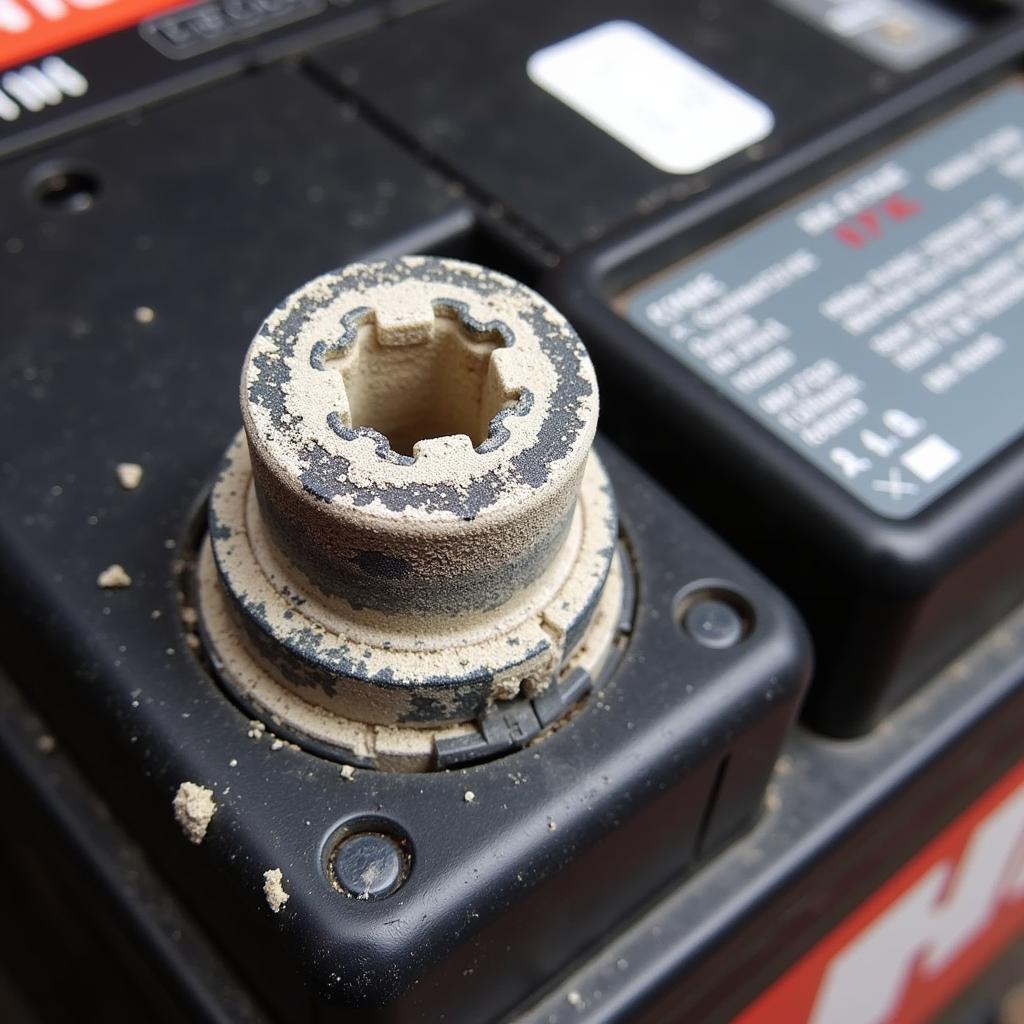A car battery fault can be incredibly frustrating, leaving you stranded and disrupting your plans. Within the first few seconds of experiencing starting issues, a failing battery is often the prime suspect. This comprehensive guide delves into the common causes, symptoms, and solutions for dealing with a car battery fault, empowering you to diagnose and potentially fix the issue yourself. Learn how remote diagnostics and software solutions can play a key role in getting you back on the road quickly.
 Car Battery Corrosion Terminals
Car Battery Corrosion Terminals
One of the first things to consider when troubleshooting a car battery fault symptoms is understanding the symptoms. These can range from a slow engine crank to completely dead electrical systems. Recognizing these symptoms is the first step towards identifying the root cause of the problem.
Understanding Car Battery Faults
Car battery faults stem from a variety of reasons. Age is a significant factor, as batteries typically have a lifespan of 3-5 years. Extreme temperatures, both hot and cold, can also impact battery performance and longevity. Leaving lights on or other electrical accessories running while the engine is off can drain the battery, leading to a no-start situation. Lastly, a failing alternator can prevent the battery from recharging properly, ultimately resulting in a flat battery.
Common Car Battery Fault Symptoms
Dim headlights, especially at idle, are a telltale sign of a failing battery. A clicking sound when turning the key indicates insufficient power to engage the starter motor. A slow engine crank, where the engine turns over sluggishly, suggests a weakened battery. Electrical issues, such as malfunctioning interior lights or radio, can point to a battery problem. Finally, the dreaded no-start situation, where the engine fails to turn over at all, often indicates a completely dead battery.
Knowing whether it’s an alternator or battery fault can be tricky. A simple test involving jump-starting the car can often help distinguish between the two. If the car starts and runs normally after a jump, but the problem returns after turning the engine off, it’s likely a failing alternator.
Diagnosing a Car Battery Fault
A multimeter can be used to test the battery’s voltage. A fully charged battery should read around 12.6 volts. Lower readings indicate a discharged battery. Load testing the battery can determine its ability to hold a charge under stress. Inspecting the battery terminals for corrosion is crucial, as corroded terminals can impede the flow of electricity. Finally, having a professional diagnostic scan performed can pinpoint the exact cause of the problem. This scan can identify issues beyond the battery itself, such as problems with the charging system.
John Smith, a seasoned automotive electrician with over 20 years of experience, emphasizes the importance of proper diagnosis: “Many people jump to conclusions and replace the battery when the problem lies elsewhere. A thorough diagnostic check can save you time and money.”
How Can Remote Diagnostics Help?
Modern vehicles are increasingly equipped with sophisticated computer systems that allow for remote diagnostics. This technology allows technicians to access and analyze a vehicle’s data remotely, identifying potential issues without physical access to the car. In the context of a battery or alternator fault, remote diagnostics can determine the health of the battery, the charging system’s performance, and even pinpoint related software glitches that might be contributing to the problem. This can significantly expedite the troubleshooting process and facilitate faster repairs.
Solutions for Car Battery Faults
Jump-starting the car can provide a temporary solution to get you moving again. Cleaning corroded battery terminals with a baking soda and water solution can improve electrical conductivity. Replacing the battery is often necessary when it reaches the end of its lifespan or sustains irreversible damage. Repairing or replacing a faulty battery or alternator is essential for proper charging system function. Remote software updates can sometimes address underlying software issues contributing to the problem, offering a non-invasive solution.
Jane Doe, a leading software engineer specializing in automotive applications, highlights the role of software in modern vehicles: “Software plays an increasingly crucial role in managing various vehicle systems, including the charging system. Remote updates can often resolve issues without the need for physical repairs.”
Conclusion
Addressing a car battery fault promptly is crucial to avoid further complications. By understanding the common causes, recognizing the symptoms, and applying the right diagnostic techniques, you can effectively troubleshoot and resolve battery-related issues. Leveraging remote diagnostics and software solutions can significantly expedite the repair process and minimize downtime. Remember, a battery faulty can be a nuisance, but with the right knowledge and tools, it’s a manageable challenge.

